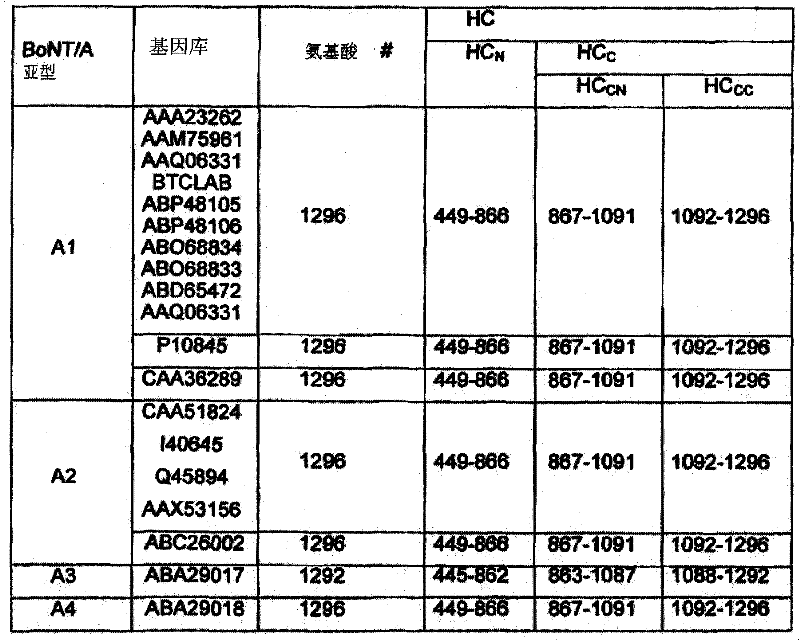Clostridial neurotoxins with altered persistency
A clostridia and neurotoxin technology, applied in neuromuscular system diseases, medical preparations containing active ingredients, peptide/protein ingredients, etc. incorrect, etc.
- Summary
- Abstract
- Description
- Claims
- Application Information
AI Technical Summary
Problems solved by technology
Method used
Image
Examples
Embodiment 1
[0324] Example 1 Construction of expression plasmids
[0325] The DNA sequence of the heavy chain of botulinum toxin type A was amplified from the chromosomal DNA of botulinum type A by PCR (database No. AAA23262). A recognition sequence encoding thrombin was added at the 5' end of the sequence. A sequence encoding an affinity tag peptide chain (such as His-tag or Strep-tag) suitable for further purification is added at the 3' end of the sequence. Insert the DNA into the expression vector. The DNA sequences of the first and second light chains were also of type A serotype, and were amplified by PCR in the same manner from chromosomal DNA of botulinum type A. Then, the sequence of the light chain was introduced into the expression vector twice consecutively, upstream of the thrombin recognition sequence (TE). Therefore, the sequence shows the following coding structure: LC-LC-TE-HC-Tag.
Embodiment 2
[0326] Example 2 Preparation of fusion proteins in E. coli
[0327] The fusion protein was transfected into E. coli TG1. Induction was performed at 21°C for 4 hours. Then, the fusion protein was purified by StrepTactin-Sepharose (IBA GmbH, Göttingen) column chromatography according to the manufacturer's instructions. The fusion protein is then activated by immobilized thrombin (thrombin-sepharose), which cleaves the peptide bond between the heavy chain and the two light chains. The remaining protein subunits are linked only by disulfide bonds.
Embodiment 3
[0328] Example 3 Persistence assay (extensor digitorum brevis, EDB)
[0329] Subjects administered 4 units of (Merz Pharmaceuticals GmbH) to the right EDB and administered 4 units of modified botulinum toxin (botulinum toxin type A fusion protein conjugated with an additional botulinum toxin type A light chain). The "compound muscle action potential (CMAP)" was measured electrophysiologically every 30 days. After 90 days, the amplitude of CMAP in the right EDB decreased to about 40% (compared to the initial activity), while that in the left EDB decreased to about 70%. The CMAP of the left EDB reached 40% after 150 days.
PUM
 Login to View More
Login to View More Abstract
Description
Claims
Application Information
 Login to View More
Login to View More - R&D Engineer
- R&D Manager
- IP Professional
- Industry Leading Data Capabilities
- Powerful AI technology
- Patent DNA Extraction
Browse by: Latest US Patents, China's latest patents, Technical Efficacy Thesaurus, Application Domain, Technology Topic, Popular Technical Reports.
© 2024 PatSnap. All rights reserved.Legal|Privacy policy|Modern Slavery Act Transparency Statement|Sitemap|About US| Contact US: help@patsnap.com








